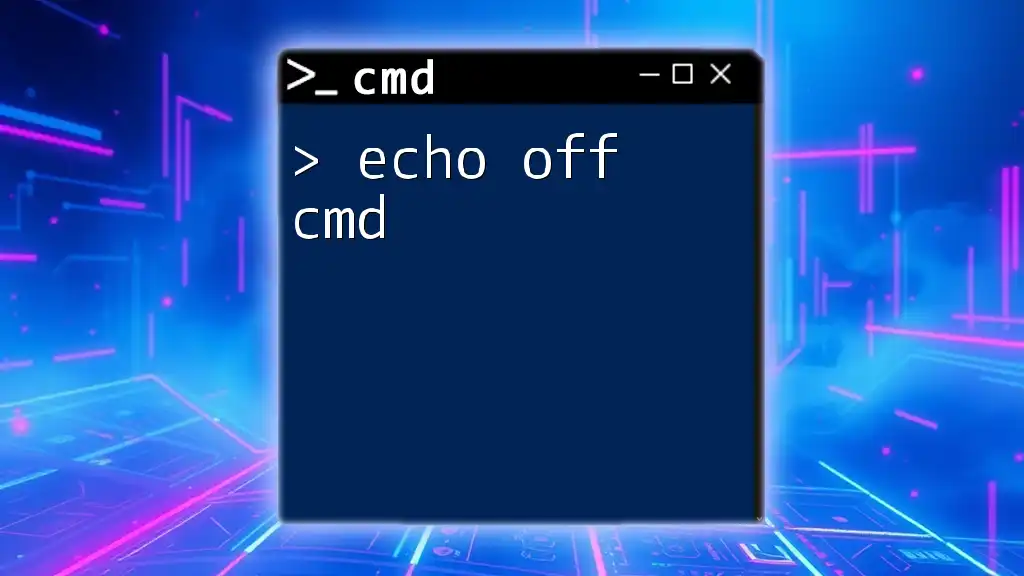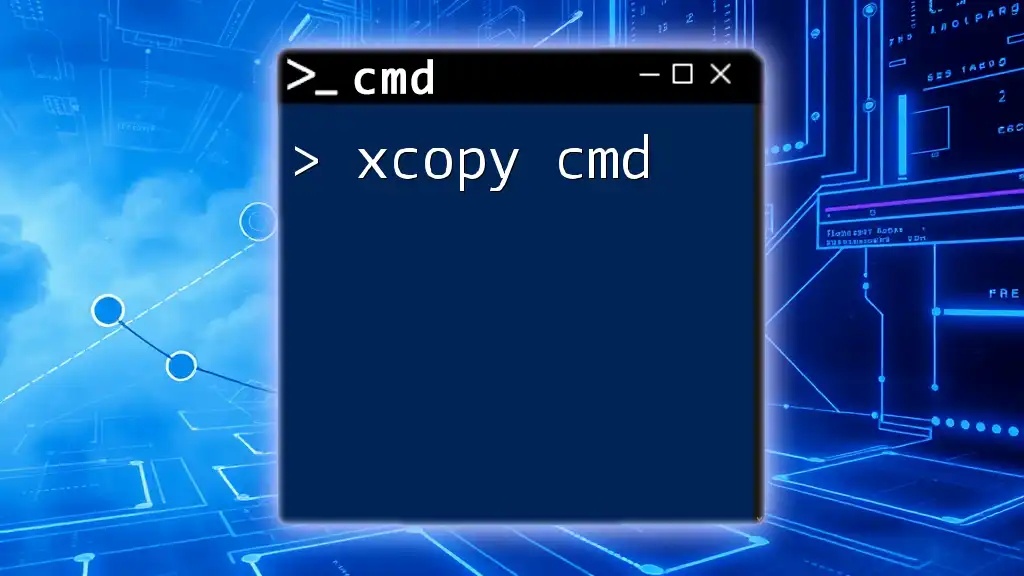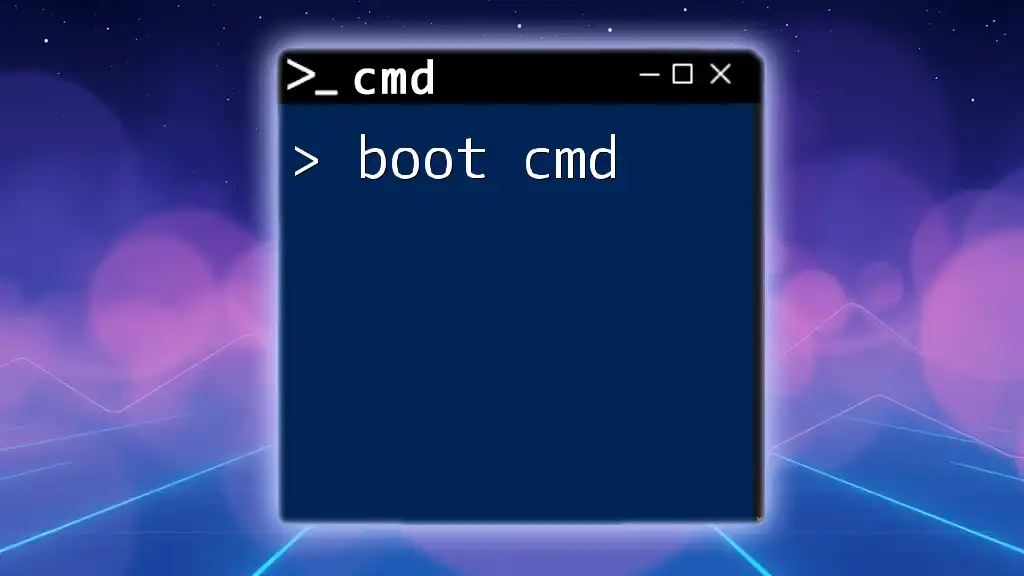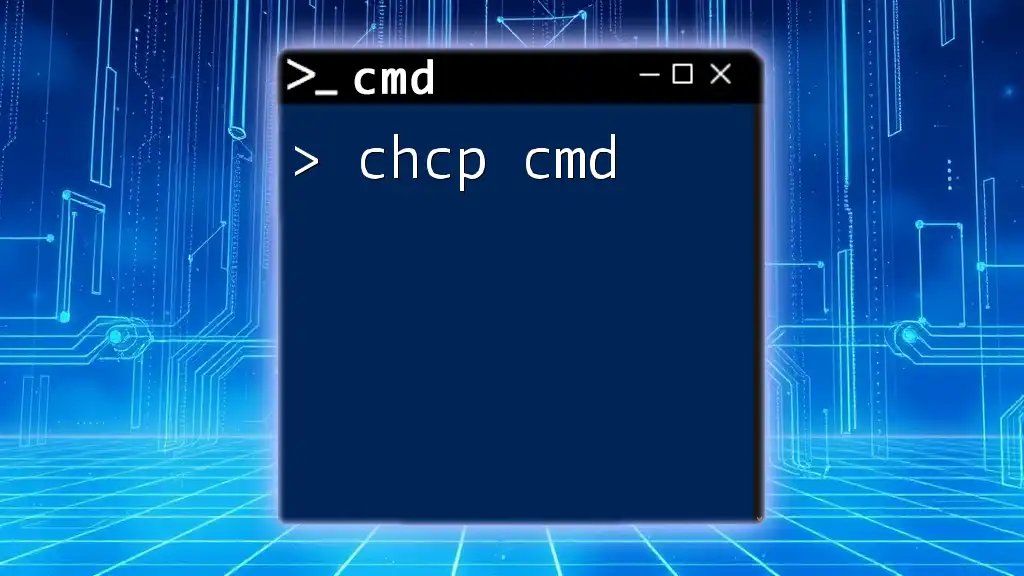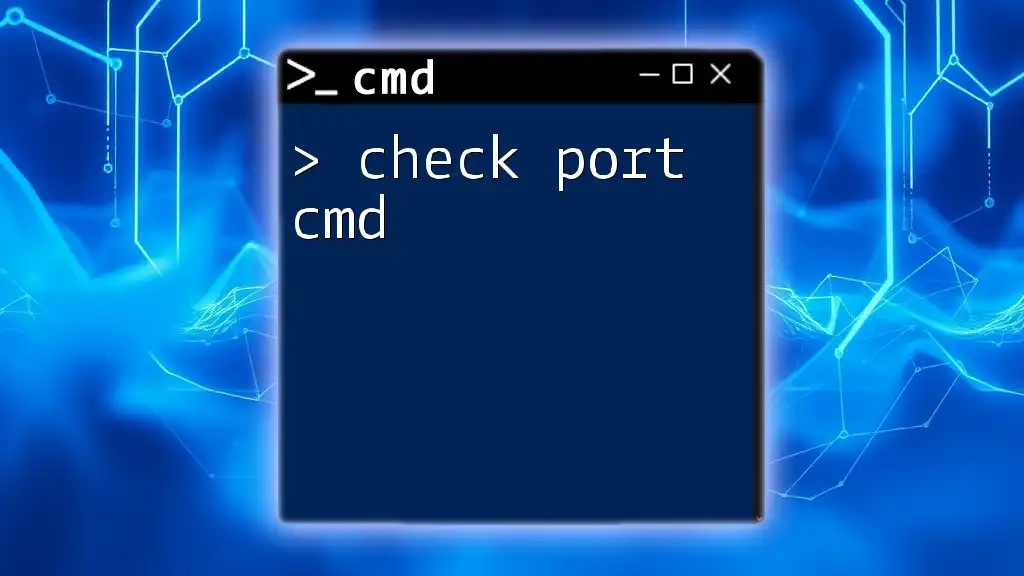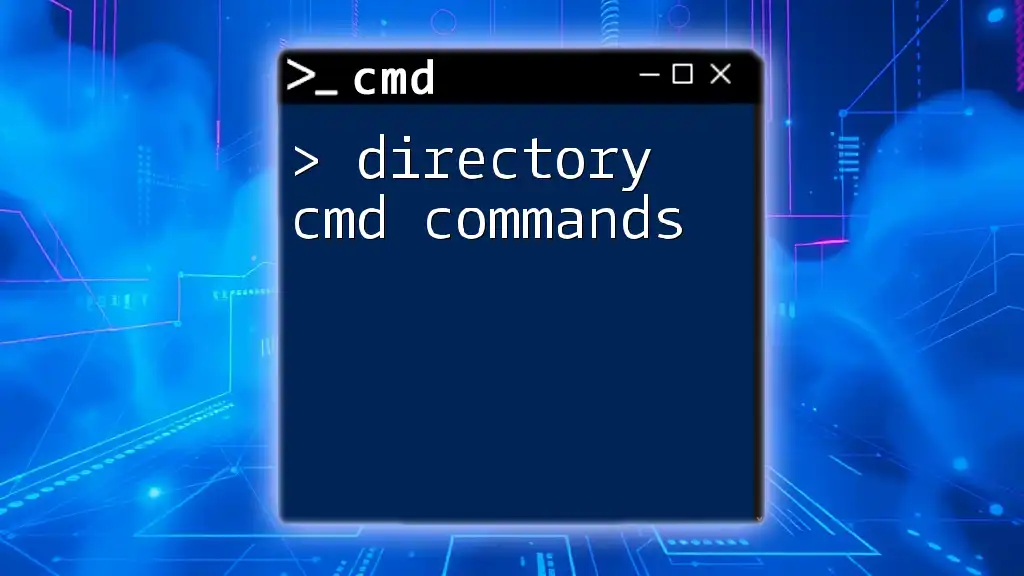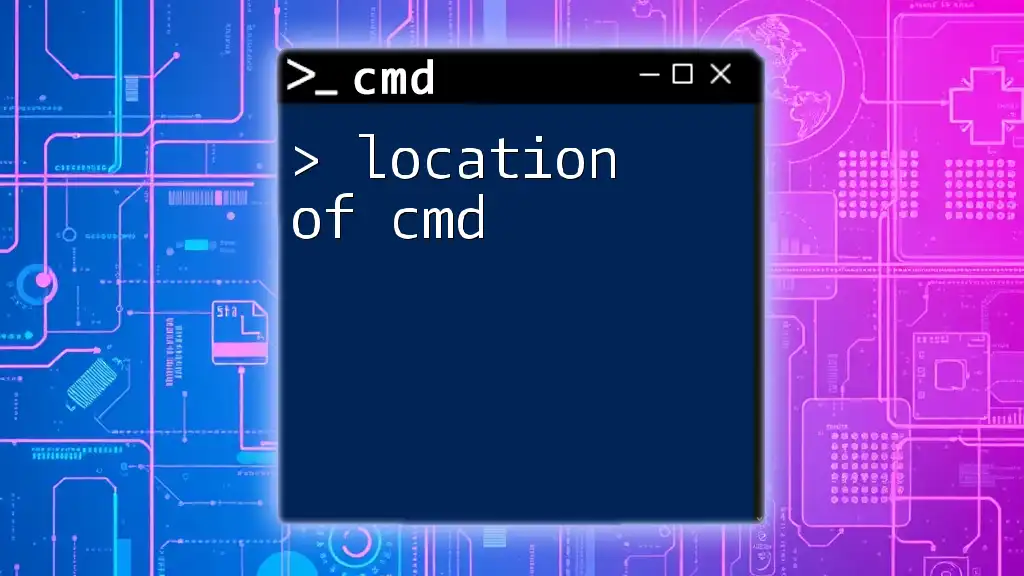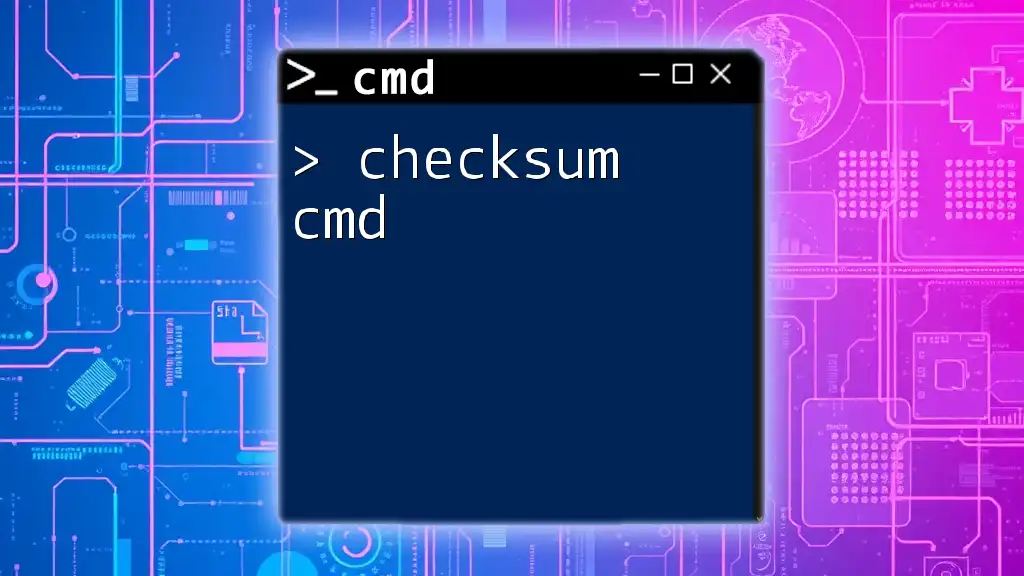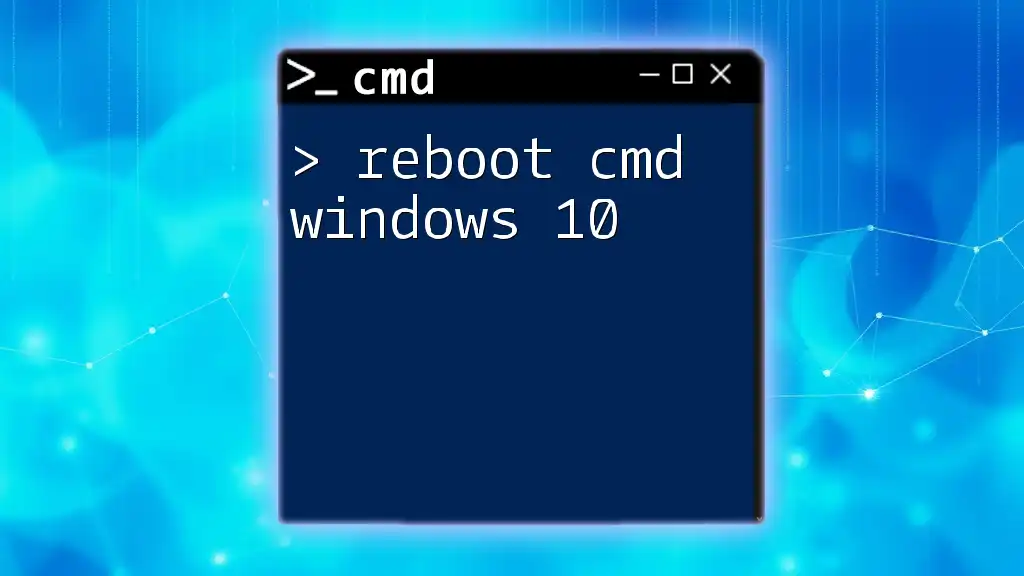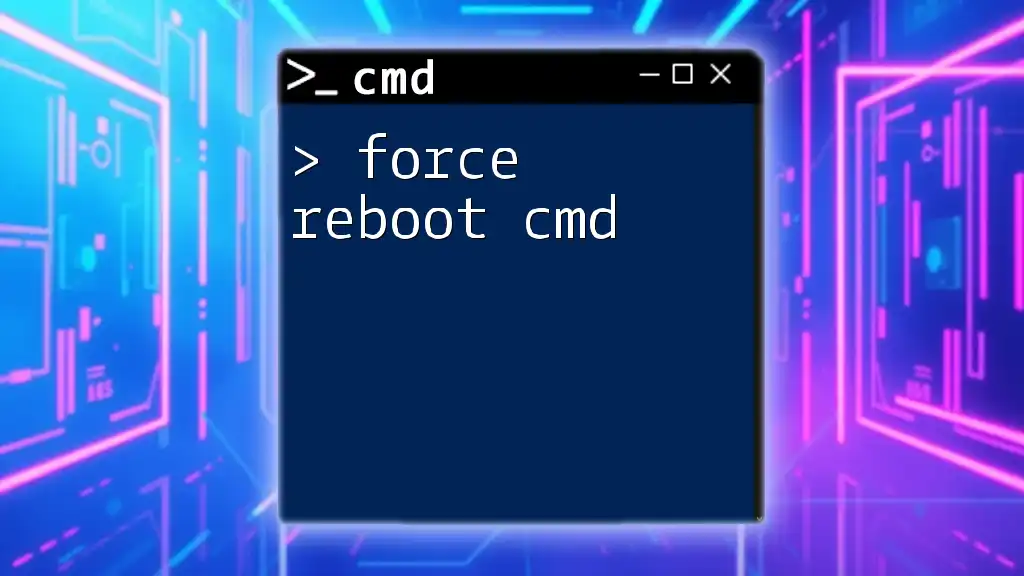The `echo off` command in CMD is used to turn off the command prompt output for subsequent commands, allowing for a cleaner display without showing the commands themselves.
@echo off
echo This message will be displayed without showing the command.
Understanding the Basics of CMD
What is CMD?
The Command Prompt, commonly referred to as CMD, is a powerful command-line interface in Windows operating systems. It allows users to execute commands directly, which can be used for a variety of tasks such as file manipulation, system monitoring, troubleshooting, and automation through scripts. It provides a level of control and direct interaction with the operating system that is not accessible through the typical graphical user interface (GUI).
Overview of Command-Line Syntax
Understanding the syntax used in CMD is crucial. Commands in CMD typically consist of the command itself followed by parameters and options. Correct syntax is essential for the desired execution of commands; even a small typo can lead to errors or unintended consequences. Familiarizing yourself with basic command-line constructs enhances your proficiency and minimizes frustration in using CMD effectively.
Echo Command Explained
The echo command is fundamental in CMD, primarily used to display messages or output text to the console. Its utility lies not only in communication but also in controlling the display behavior of the output. When scripting, employing echo cleverly can significantly influence how users perceive the execution of commands.
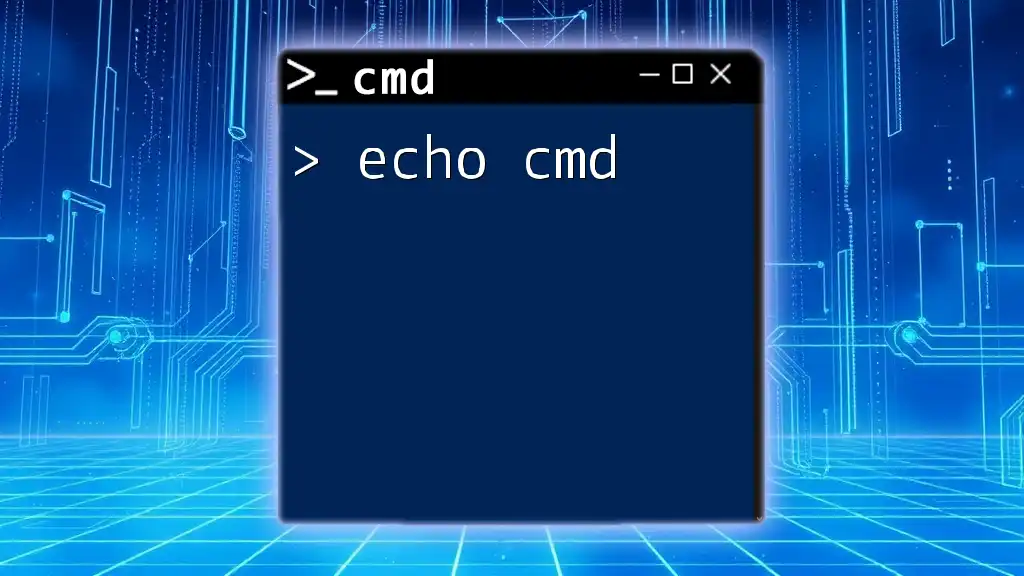
What Does "Echo Off" Mean?
Definition of Echo Off
The echo off command is a specific instruction that tells CMD to stop displaying the commands being executed in the console. By default, each command run in CMD is echoed back to the screen, making scripts more challenging to read. Using echo off changes this behavior, allowing only the output specified by the user to be shown.
Purpose of Using Echo Off
Employing echo off serves multiple purposes. Primarily, it suppresses command visibility, which keeps the output clean and user-friendly, particularly in batch files. By hiding commands, users can focus on the results of the process without being distracted by the underlying syntax. It can also create a more professional appearance, particularly in scripts intended for presentation or distribution.
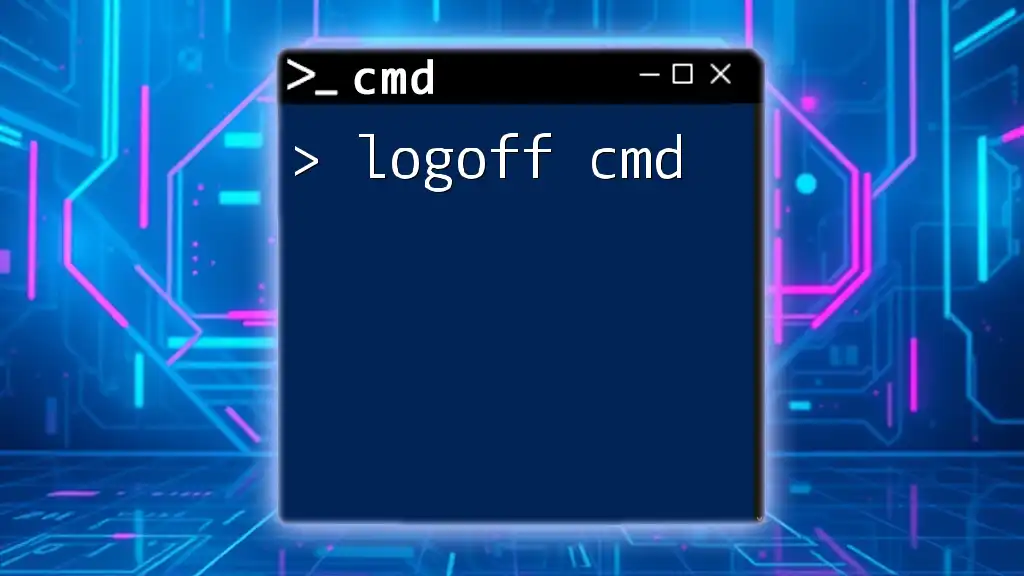
How to Use Echo Off in CMD
Basic Usage of Echo Off
To utilize echo off, simply prefix your commands with `@echo off`. The @ symbol ensures that even the command itself remains suppressed. Here's the basic syntax:
@echo off
This command is typically placed at the beginning of a batch file to maintain a clean output environment.
Examples of Echo Off in Use
Simple Example
Here’s a straightforward example demonstrating its use.
@echo off
echo Hello, World!
In this case, when executed, only the text "Hello, World!" appears in the console. The command itself does not display due to the effect of echo off.
Using Echo Off in Batch Files
Creating a batch file allows for more substantial automation. Here’s an example of a batch file using echo off to manage simple tasks.
@echo off
echo Starting the script...
echo Running commands...
pause
This script starts by indicating the script has begun, runs other commands (which could be anything from file manipulations to system checks), and waits for user input with the `pause` command. The visibility of underlying commands is suppressed throughout.
Combining Echo Off with Other Commands
The power of echo off shines when combined with other CMD commands. For instance, if you wish to delete temporary files while keeping the output clear, you might write:
@echo off
echo Performing cleanup...
del *.tmp
echo Cleanup complete.
This script details its purpose, performs the cleanup task, and confirms completion without overwhelming the user with unnecessary text.
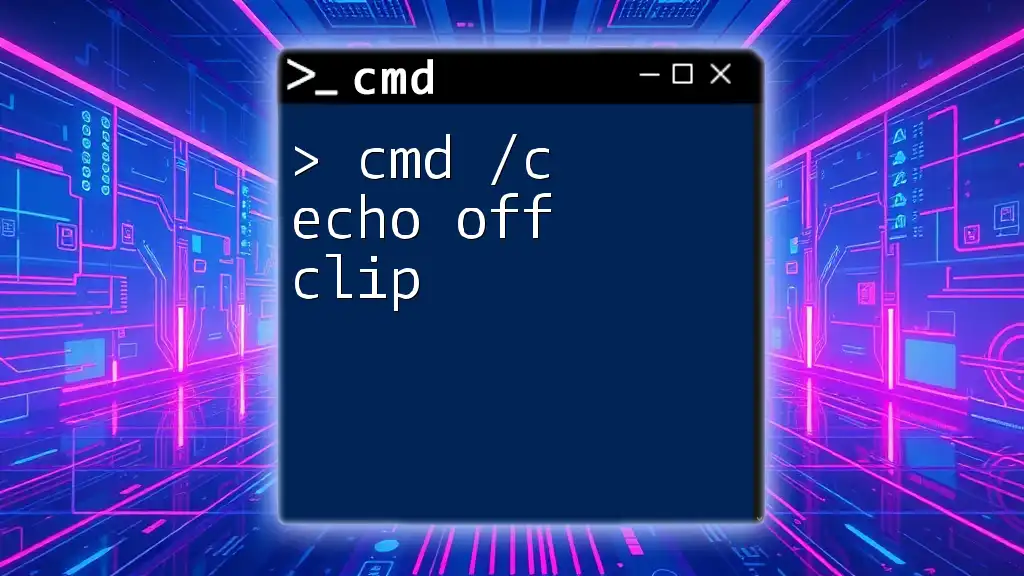
Best Practices for Using Echo Off
When to Use Echo Off
Echo off is ideal when you want to maintain an organized and professional presentation of script outputs. It works best in scenarios where the goals of your script should take precedence over the underlying commands, such as in automated reports or user-facing scripts.
Potential Pitfalls of Using Echo Off
There are risks associated with suppressing command visibility. Echo off can mute vital error messages or troubleshooting outputs, making it challenging to diagnose issues when they arise. It’s essential to balance cleanliness in output with the need for feedback during script execution.
Alternative Commands to Consider
While echo off is incredibly useful, consider using echo on in instances where feedback is necessary. Echo on reverses echo off, allowing users to see command details for troubleshooting or confirmation. Additionally, the @ symbol serves an important role; using it before a command prevents the command itself from displaying, making your output cleaner.
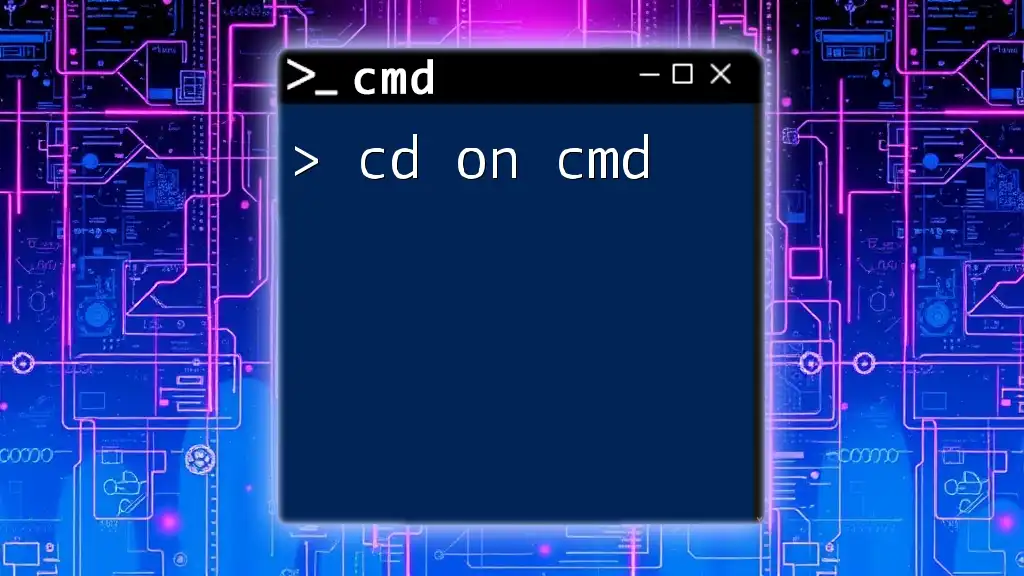
Conclusion
The echo off cmd command is a powerful utility in the realm of Windows command-line interface. By mastering it, users can create scripts that are not only efficient but also visually appealing. Encouraging practice and experimentation with these commands will undoubtedly enhance your productivity in CMD. Understanding when and how to deploy echo off opens a world of automation possibilities while keeping your command line uncluttered and focused.

Additional Resources
For further reading, consider exploring resources dedicated to CMD commands, such as online forums, tutorials, and educational platforms. Many books also delve into command-line scripting, offering structured approaches to mastering CMD.
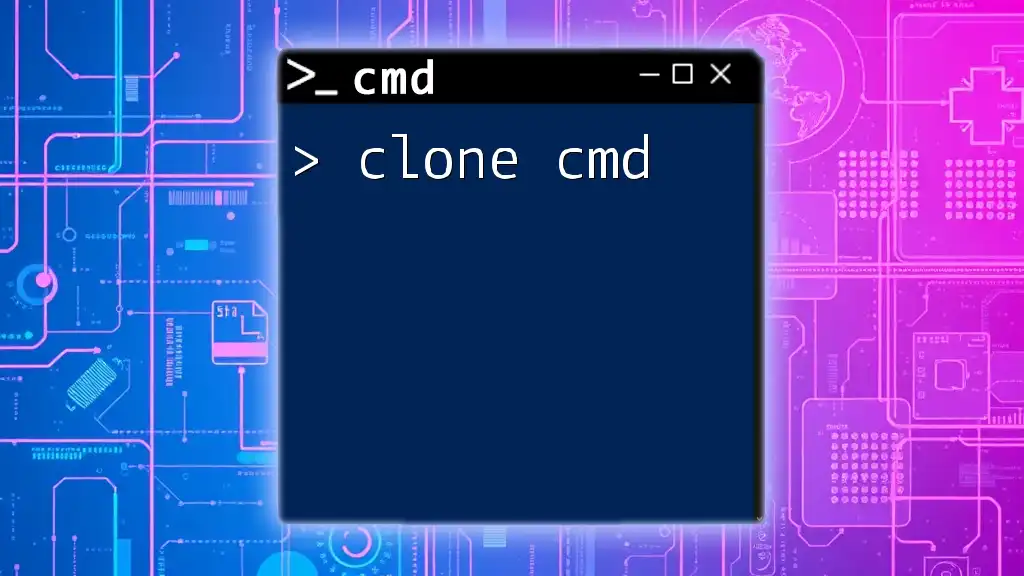
Call to Action
We invite you to share your experiences using echo off cmd or any CMD commands you've learned. Your insights could help fellow readers navigate their own CMD journeys! Don't hesitate to leave comments and ask questions for further guidance.

